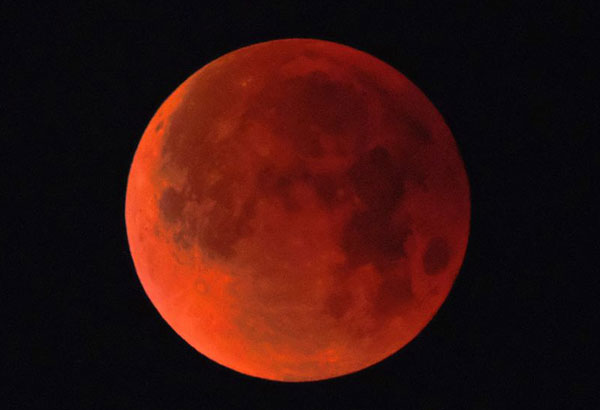Lunar Showstopper: 1st super blue blood moon in 35 years

Lunar Showstopper: 1st super blue blood moon in 35 years. AP
CAPE CANAVERAL — The moon put on a rare cosmic show yesterday: a red blue moon, super big and super bright.
It's the first time in 35 years a blue moon has synced up with a supermoon and a total lunar eclipse, or blood moon because of its red hue.
Hawaii and Alaska had the best seats, along with the Canadian Yukon, Australia and Asia. The western US also had good viewing, along with Russia.
At the Griffith Observatory in Los Angeles, hundreds gathered on the lawn in the wee hours, under clear skies, to bask in the celestial enchantment. Sky-gazers also lined the beach near the Santa Monica Pier, some snapping photos and others reclining in the sand, their faces turned upward.
The US East Coast, Europe and most of South America and Africa were out of luck for the eclipse. But at Cape Canaveral, Florida, where a rocket delivered America's first artificial satellite to orbit exactly 60 years ago — Explorer 1 — the blue supermoon loomed large in the sky.
The second full moon in a calendar month is a blue moon. This one also happened to be an especially close and bright moon, or supermoon. Add a total eclipse, known as a blood moon for its red tint, and it was a lunar showstopper.
NASA is calling it a lunar trifecta: the first super blue blood moon since 1982. That combination won't happen again until 2037.
The space agency provided a live stream of the moon from ground telescopes throughout the eclipse.
A total lunar eclipse — considered the most scientific of yesterday's threesome — occurs when the sun, Earth and moon line up perfectly, casting Earth's shadow on the moon.
Scientists were keen to study the sharp, sudden drop in temperature at the lunar surface as Earth's shadow blankets the moon. During the more than one hour of totality, the temperature was expected to plunge 100 degrees Fahrenheit (38 Celsius), said lunar scientist Noah Petro of Goddard Space Flight Center in Greenbelt, Maryland. He's deputy project scientist for NASA's Lunar Reconnaissance Orbiter, circling the moon since 2009. His team took special precautions to keep the spacecraft warm during the eclipse.
Perhaps just as important, Petro and others are hoping the big event gets more people looking up — not just yesterday, but every day.
For the trivia crowd, the moon was 223,820 miles (360,200 kilometers) away at the peak of the eclipse, close enough for supermoon status.
- Latest
- Trending


























